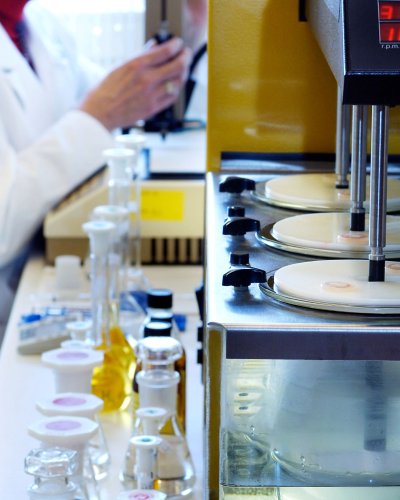History of the German and European Pharmacopoeia
An example of the development of a standard work on the quality of pharmaceuticals is the story from the German Pharmacopoeia to the European Pharmacopoeia. It begins as early as 1546 with the first forerunner of the German Pharmacopoeia by the doctor Valerius Cordus. This includes recipes for drugs and information on active ingredients.
As a first special feature, a “defined” weight system is used to describe the recipes.
Pharmakopeia Augustana
This collection was initially published in Nuremberg, but it soon became widely known, not only beyond its city limits, but also beyond the national borders in Europe. When the Pharmakopeia Augustana was published in 1573, it was the second edition of the Cordus collection. This is where the term pharmacopeia appears for the first time. This word from the Greek means: to make remedies or poisons.
Pharmacopoeia for the individual federal states (Württemberg, Bavaria, Prussia) only appear around 200 years later and are still very inconsistent. Because in the individual countries there are different drug habits, different names for same things, different analytical requirements. Inconsistent measurement and weight systems are also used. The descriptions also differ in form and style.
First German Pharmacopoeia
It was not until 1872, more than 300 years after Cordus, that the first all-German uniform edition appeared, of the first German Pharmacopoeia, DAB1, which was only subsequently referred to as the first German Pharmacopoeia (Deutschen Arzneibuches, DAB1). This 1st Pharmacopoeia Germanica has finally become possible because the German Reich was founded in 1870 and the rivalries between the individual state governments ended. For this purpose, a pharmacopoeia commission was appointed by the Federal Council and mandated to work out a harmonization of the pharmacopoeias.
The Pharmacopoeia Commission or Pharmacopoeia Commission met here for the first time. A group of 16 professionals made up of pharmacists, doctors, professors of pharmacy, professors of chemistry and other experts.
The inclusion of further drugs, increasing experience among users, new technical knowledge, and effective style make the appearance of further DABs necessary.
Permanent Pharmacopoeia Commission
20 years later, in 1891, the third edition of the German Pharmacopoeia has already arrived, which is now published in German. To develop this DAB 3, a permanent pharmacopoeia commission is being set up for the first time by the Imperial Health Office, from which our current higher federal authorities have developed.
In the course of the development of the German pharmacopoeias, more and more descriptions of individual active ingredients and individual auxiliary substances were added. These monographs now contain very specific instructions on how these substances are to be tested and what results they must show in order for them to be used as medicinal substances.
Pharmacopoea Europaea
The history of the German Pharmacopoeia does not end with the publication of the first European Pharmacopoeia in 1969, but the importance of the German Pharmacopoeia is steadily decreasing and that of the European Pharmacopoeia (Ph.Eur.) Is steadily increasing. This European Pharmacopoeia appears first and simultaneously in English and French and is only then translated into German.
The history of the European Pharmacopoeia is young and therefore short. It begins 5 years before the Ph.Eur. 1969. It is afflicted with similar difficulties as it was the harmonization of the different cities and country pharmacopoeia to the German Pharmacopoeia. In Europe, too, we have different traditions, different forms of government, political wrangling, different conceptions of quality, yes, different conceptions of what counts as medicines and what is not, different goals, maybe also economic influence.
Source: Mohr R (2005) Author of several chapters on history. In: Göber B, Surman P (ed.) Arzneimittelkontrolle – Drug Control, Grundlagen und Methoden der Prüfung und Standardisierung von Arzneimitteln. Wissenschaftliche Verlagsgesellschaft – Deutscher Apotheker Verlag Stuttgart; Liebich Gisela (2003) Public lecture at the GDCh annual chemistry conference in Munich

